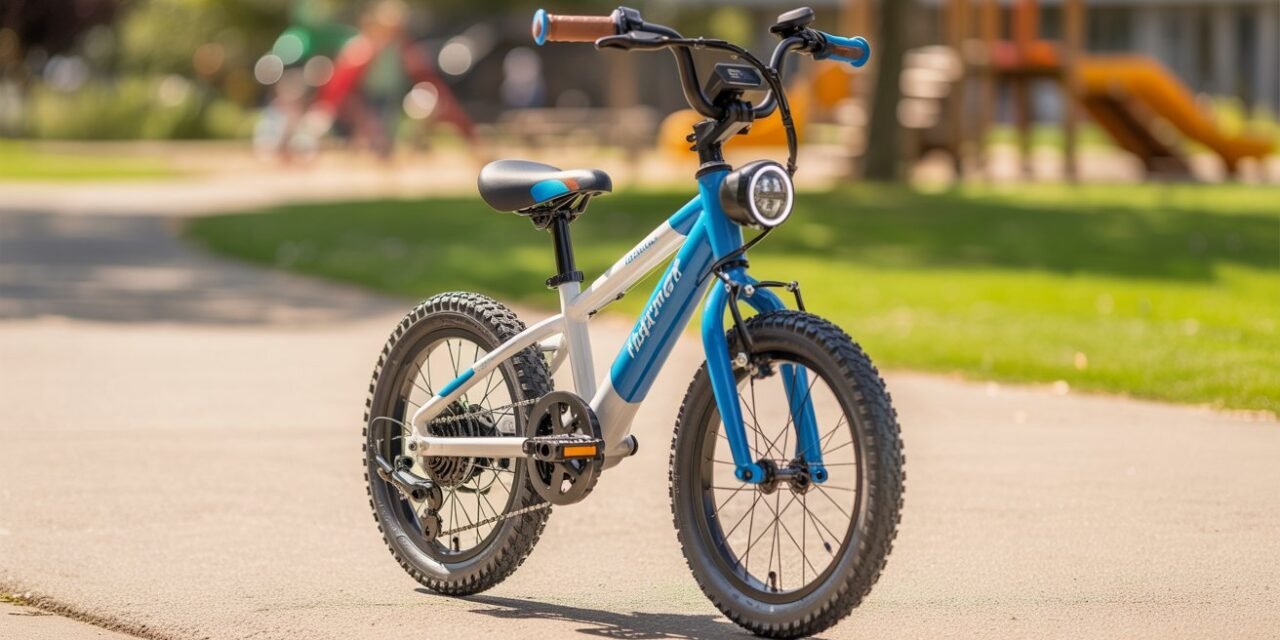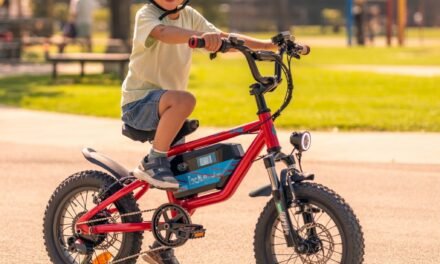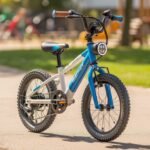The sight of a child mastering their first bike is a timeless rite of passage. Today, that experience is being redefined by the whirr of a small motor and the gleeful smile of a young rider. A kids electric bike is more than just a toy; it’s a gateway to adventure, independence, and outdoor fun. However, as a parent, it’s natural to have questions about safety, suitability, and value. This guide is designed to walk you through everything you need to know to make an informed and confident decision.
Why Consider an Electric Bike for Your Child?
Before diving into specs and safety gear, let’s explore the core benefits. Electric bikes for children offer unique advantages that traditional pedal bikes simply cannot match.
First, they promote inclusivity and extended family fun. If your family enjoys long trail rides, a child on a standard bike might struggle to keep up, leading to frustration and cut-short adventures. An e-bike levels the playing field, allowing younger riders to maintain a comfortable pace alongside adults, ensuring everyone can enjoy the journey together.
Furthermore, they can be a fantastic tool for building confidence. For some children, the physical effort of pedaling up a hill or keeping pace can be daunting. The pedal-assist feature on an e-bike gives them a boost, turning a challenging ride into an achievable and enjoyable one. This success encourages them to spend more time outdoors, actively engaging in a healthy hobby rather than in front of a screen.
Finally, an electric bike teaches responsibility. Operating a powered vehicle, even a small one, comes with rules. It provides a perfect opportunity to instill important lessons about safety awareness, respecting traffic laws (even on sidewalks and paths), and properly caring for a valuable piece of equipment.
Choosing the Right Kids Electric Bike: Key Features to Look For
Not all e-bikes are created equal. Selecting the right model involves careful consideration of several factors to ensure a perfect blend of safety, fun, and durability.
1. Age and Size Appropriateness
This is the most critical factor. Manufacturers provide recommended age and height ranges. The bike must fit your child properly; their feet should be able to touch the ground flatly when seated. A bike that is too large is unsafe and difficult to control. Generally, kids electric bike models are designed for children aged 8 and up, with wheel sizes typically ranging from 16-inch to 24-inch.
2. Speed and Power Limits
Responsible manufacturers design e-bikes for kids with strict speed governors. Look for models with multiple speed settings, often capped at lower speeds like 10 mph for younger riders, with options to increase slightly for older kids, but rarely exceeding 15 mph. The motor power is also modest, usually between 100W to 250W, providing enough assistance without being overwhelming.
3. Safety Features are Non-Negotiable
Your top priority should be safety. Essential features include:
- Coaster Brakes and Hand Brakes: A combination of both offers redundant stopping power. Coaster (pedal-backwards) brakes are intuitive for kids, while hand brakes teach them proper cycling technique.
- Speed Governor: As mentioned, this allows you to set a maximum speed, giving you peace of mind.
- Durable Construction: A sturdy frame, often from aluminum, can withstand the bumps and jumps of active play.
- Bright Lights: For visibility during early evening rides.
4. Battery Life and Charging
Consider the bike’s range—how far it can go on a single charge. Most kids’ e-bikes offer a range of 10-20 miles, which is ample for most adventures. Check the charging time; a battery that charges fully in 4-6 hours is standard. Also, ensure the battery is securely housed within the frame.
Top Safety Tips for Young E-Bike Riders
Owning the bike is just the first step. Ensuring your child knows how to ride it safely is an ongoing process.
Gear Up, Every Single Time.
A properly fitted helmet is an absolute must. Elbow and knee pads are also highly recommended, especially while the child is getting used to the bike’s power and handling. Make this a non-negotiable rule before the bike is even turned on.
Start in a Controlled Environment.
Do not let your child’s first ride be on a busy sidewalk or trail. An empty parking lot, a quiet cul-de-sac, or a empty park path is the perfect training ground. This allows them to get a feel for the acceleration, braking, and weight of the bike without distractions or hazards.
Teach E-Bike Etiquette and Rules.
Your child must understand that their e-bike is different from a regular bike. They should be taught to:
- Always be aware of pedestrians and yield to them.
- Use a bell or their voice to alert others when passing.
- Obey all standard traffic and bicycle rules.
- Never use headphones while riding.
- Always check with a parent before going for a ride.
Supervise and Set Boundaries.
Active parental supervision is crucial, especially in the beginning. Set clear geographic boundaries for where they are allowed to ride and consistently enforce the safety rules you’ve established.
The Long-Term Value: Maintenance and Care
A kids electric bike is an investment. Proper care will ensure it lasts, potentially for multiple siblings, and remains safe to use.
Start by regularly checking tire pressure and brake function. Teach your child to visually inspect their bike before rides. Keep the bike stored in a dry, covered area to protect its electrical components from rain and extreme temperatures. Furthermore, periodically check all bolts and screws for tightness, as vibrations from riding can loosen them over time. Finally, follow the manufacturer’s guidelines for battery care, which often include not draining it completely and storing it in a cool, dry place.
Conclusion: Empowering the Next Generation of Riders
A kids electric bike can be a wonderful addition to your child’s life, fostering a love for the outdoors while teaching valuable lessons in responsibility and safety. By carefully selecting an age-appropriate model, prioritizing safety above all else, and engaging in ongoing education, you can provide your child with a thrilling and rewarding experience. The goal is not just to give them a new gadget, but to empower them with confidence and create lasting memories of joyful, wind-in-the-hair adventures.
FAQs: Kids Electric Bikes
1. What is the right age for a child to get an electric bike?
Most manufacturers recommend e-bikes for children ages 8 and up. The key factor is not just age, but also the child’s maturity, coordination, and ability to understand and follow safety rules.
2. How fast can a typical kids’ electric bike go?
For safety, most kids’ e-bikes have speed governors that limit top speeds, often between 10-15 mph. Many models offer multiple speed settings, allowing parents to set a lower limit for beginners.
3. Are electric bikes safe for kids?
They can be safe when the right precautions are taken. Safety depends on choosing an age-appropriate bike, ensuring your child always wears a helmet and protective gear, and providing thorough supervision and training on riding etiquette.
4. How long does the battery last on a single charge?
Battery life varies, but most kids’ e-bikes offer a range of 10 to 20 miles per charge. This is usually more than enough for a day of casual riding around the neighborhood or on trails.
5. Can my child pedal an e-bike if the battery runs out?
Yes, the vast majority of kids electric bikes are built as pedal-assist models, meaning they can be pedaled just like a regular bicycle if the battery is depleted. This prevents them from getting stranded.










